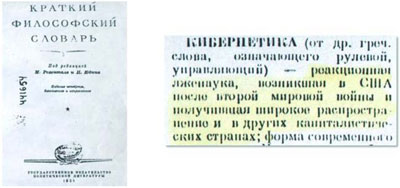Aspects of Computer Design and Manufacturing in Lithuania
Algirdas Pakstas
1. Lithuania in the Context of Mathematics Teaching Development in Europe
The Saint Petersburg State University is the Russia's oldest university, founded in 1724 by the Peter the Great.
Lomonosov’s Moscow State University was established in 1755 [1].
Attempts to open their own University in Lithuania was started by the Lithuanian reformats – during 1539–42 there was working a Reformat’s school for the nobelty kids. Prince Mikalojus Radvila Juodasis (also known as Mikołaj "the Black" Radziwiłł) by his order of 1565 allocated funds for University establishing and Reformat’s nobelty promised to join in financial support. However, this institution was not intended to be at the high scientific level, e.g. protestants at the time criticized astronomical ideas of Nicolaus Copernicus (in Polish:Mikołaj Kopernik, 1473–1543) who formulated a heliocentric model of the universe which placed the Sun, rather than the Earth, at the center [2].
Only activity of Philipp Melanchton (born Schwartzerdt, 1497–1560) helped to change the views and accept Copernicus’s heliocentric model. Melanchthon was a German reformer, collaborator with Martin Luther, the first systematic theologian of the Protestant Reformation, intellectual leader of the Lutheran Reformation, and an influential designer of educational systems [3]. He was not very talented mathematician but has written introductions to the astronomy books of Johannes de Sacrobosco and to the Elements (Στοιχεῖα Stoicheia) text consisting of 13 books written by the ancient Greek mathematician Euclid in Alexandria c. 300 BC and which remains the basis of mathematics 23 centuries later.
The first book of the Elements contains definitions, postulates and axioms. Postulates are mostly defining the main relationships between the points (e.g. “the direct line can be drawn via 2 points”. Axioms – about operations with numbers, “e.g. if two numbers are equal to the 3rd then they are equal to each other”. The first book is focused on questions of triangles and parallelograms and is finished by the Pithagoras Theorem.The second book, based on the works of pithagorians, is dedicated to the “geometric algebra”. Books 3 and 4 are explaining the geometry of circles and curves as well as multy-element-angled elements geometry – this was based on the works of Hippokratis from the Chijes. Book 5 is dedicated to the general theory of proportions created by Eudoks from Knid (Εὔδοξος ὁ Κνίδιος, 408BC-355BC) and in Book 6 was explained the theory of the similar figures. Books 7–9 are dedicated to the numbers theory – based on pithagorians works. It is likely that the author of the Book 8 was Architas from Torento. In those books are discussed the theorems about proportions and geometrical progressions, especially the common denominant divider. In mathematics, the greatest common divisor (gcd), also known as the greatest common factor (gcf), highest common factor (hcf), or greatest common measure (gcm), of two or more integers (at least one of which is not zero), is the largest positive integer that divides the numbers without a remainder. For example, the GCD of 8 and 12 is 4. In the Book 10 was created a system of irracianlity (it looks that authored by the Tejetetas from Athens). Book 11 was focused on backgrounds of the Stereometry. Book 12 focused on the theorems about pyramids and cones. Book 13 is devoted to the multi-variable equations and it is hold that the author is The Tejetetas from the Atėns.
Such was a scene of debates which followed by the establishing of the Vilnius University in 1579 by the Jesuit Order (the Society of Jesus [4]) to whom Great Lithuanian Prince Steponas Batoras (Stephen Báthory, 1533–1586) allowed to reorganize a Jesuit’s college, which was working in Vilnius from 1570, to the Vilnius University (Academia et Universitas Vilnensis Societatis Jesu), the transformation being confirmed by the Pope Gregory XIII [5]. Steponas Batoras was Voivode of Transylvania, Prince of Transylvania, from 1576 Queen Anna Jagiellon's husband and jure uxoris King of Poland [4]. Jesuit Order is Roman Catholic order of religious men founded by St. Ignatius of Loyola, noted for its educational, missionary, and charitable works, once regarded by many as the principal agent of the Counter-Reformation, and later a leading force in modernizing the church [4].
Although being away from other European cultural centers, the Vilnius University equaled other famous European Universities and had outstanding professors and students, some of who were: the poet Mathias Casimir Sarbievius; the famous professor of rhetoric and philosophy Žygimantas Liauksminas; the author of the first history of Lithuania Albertas Vijūkas-Kojelavičius; professor Martin Smiglecki, whose book “Logics” was very popular in the United Kingdom and France, and many other countries. The first book in the Lithuanian language on the territory of the Great Duchy of Lithuania was published at the Vilnius University. The Astronomical Observatory was set up in Lithuania in 1753 [5].
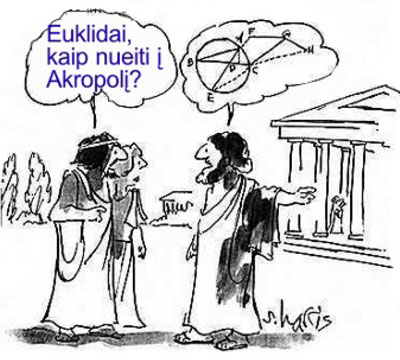
Fig. 1. “Hei Euclid, what is the way to Acropolis?” –“ABC-XYZ”
Teaching of mathematics in Europe was significantly affected by the works of Christopher Clavius (1538–1612) who was a German Jesuit mathematician and astronomer – in his last years he was probably the most respected astronomer in Europe and his textbooks were used for astronomical education for over fifty years in and even out of Europe [6].

Fig.2. Mikołaj Kopernik [2]
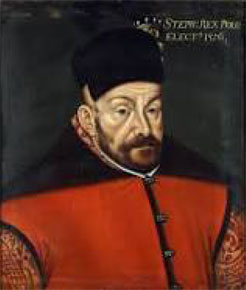
Fig.3. Steponas Batoras [5]
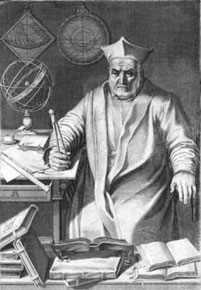
Fig.4. Christopher Clavius [6]
In Vilnius University the first teacher of the upper level mathematics was Osvaldas Krygeris (Kruger, 1598–1655), however 1655 war with Moscovia and death of the teacher for the long time affected quality of mathematics teaching in Vilnius University. Krygeris amongst other things was known as specialist in military enginery, ballistics and fortification [7].
In about year 1600 Vilnius University had about 600 students. However, Mathematics was taught one year by one teacher, later by another. VU Rector Jokūbas Vujekas (1541–1597) was teaching mathematics until 1579 but after that Mathematics was not taught for a number of years. The only successor of the Christopher Clavius who taught in VU (1595–1600) was Mykolas Salpis. After that, during 1600–1613, Mathematics in the VU was not taught at all. Situation was improved when Osvaldas Krygeris was teaching, althought sporadically, who was assisted by Walenty Skowid (160987) and Pawel Laskowski‘s (1611–64) [7].
After invasion to Lithuania in 1655 by the Czar Aleksey Mikhailovich [8] army it strongly worsened VU operation – many teachers have escaped which had long term consequences. Jesuits, who wanted to have high level Mathematics school in Vilnius have tried to involve VU graduate, very capable mathematician, Adomas Adamandas Kochanskis (1631–1700) but with variable success. After that for a couple of years Mathematics was taught by Albertas Tilkovskis (Alberto Tylkowski, 1625–95). Tilkovskis was a person with the broad horizon mind, he was serving 7 year mission in Turkey, wrote many books and not only about Mathematics, e.g. Philosophia curiosa (1680) as well as his review of the K. Semenavičius To the Great Artillery Art.
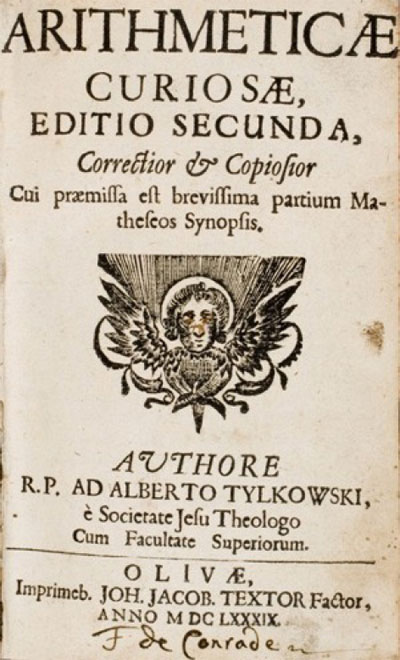
Fig. 5. The title page of the Arithmeticae Curiosae by Albertas Tilkovskis [8]
2. Cybernetics in Lithuania – the beginnings
It is worth to remember saying of the Norbert Wiener, one of the men who put backgrounds to the Cybernetics, “Computer is worth only as much as a human who is using it”.
In the independent period between the World Wars the ideas about using of computers for scientific research were developed in Lithuania. It was brought by Adolfas Jucys, graduate of the Vytautas the Great University. At the time there was very good tradition to send the best graduates abroad to Switzerland, Germany, France or England. In 1939 Adolfas Jucys went to Cambridge to study atomic physics (!). After seeing there, the modern research he realized that it is impossible to do without good computational base. This idea he brought to Lithuania in 1940, however it took another 22 years because Lithuania was occupied by Soviet Russia and the view on Cybernetics was very negative.
Now to the memories of the past as have been told by the Academician, Prof Laimutis Telknys (see Fig. 7):
“It is important to remember that at mine young days my connection to cybernetics started when we started to construct radio receivers. If you cannot construct radio receiver – what kind of man you are? I would say that my contacts with cybernetics started when we started to construct such radio receivers which allowed to get over the “Soviet jummers” trying to suppress Western signals.
We have learned how to design directional antennae, the ways which allow to filter electromagnetic waves. We have re-developed the German „Blaupunkt“ and „Philips“ apparatus. We have replaced the old vacuum lamps by the compatible Russian parts. We even have made a radio broadcaster in order to send to each other some music – at some stage we discovered that the pelengator car was arriving. We have noticed this approach, detached the vacuum lamps and the KGB unit have departed.”
In fact, “Cybernetics” was a dirty word in the USSR (see Fig. 6) and this hindered a lot the development of the modern science. In 1953 researchers in Kiev have constructed computer but this was not allowed to continue and work was closed. However, when Soviets needed to create a hydrogen bomb Sergey Lebedev was brought to Moscow, closed to the prison and was told “make the same machine but better” [9].
In 1996 the IEEE Computer Society recognized Sergei Lebedev with a Computer Pioneer Award for his work in the field of computer design and his founding of the Soviet computer industry.
In 1968 in the main LSSR newspaper “Tiesa” (= “Pravda”) was published very futuristic article based on the interview with Dr Laimutis Telksnys in which he answered pretty simple question – “How he sees the world in 2017, i.e. in 50 years?” The article was titled “Informeris vietoj laikrodžio” (Informer in the place of a Watch). His vision of “informer” is now already obviously implemented by various forms of portable computing and mobile devices and much earlier than after 50 years.
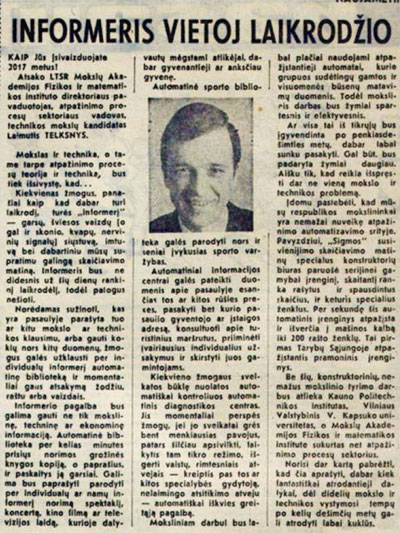
Fig. 7. Vision of the future: Newspaper “Tiesa” article featuring Laimutis Telksnys “How do you see 2017?: Informer in the place of a Watch”
Special attention to the use of computers for military purposes have affected overall development of computing technology in the USSR. There is one example from the Cold War times. In order to create a permanent danger situation USSR have placed missiles carrying atomic bombs on the submarines which were moving around USA. USA have replied by the placing to the ocean the special devices with hydrolocators enabled to communicate with Earth satellite. USSR forces have “fished” these devices and extracted the most modern microelectronics from them – this was “layer-by-layer” copied in the USSR factories (including in Vilnius).
Thus, USSR was technologically lagging behind USA for relatively short period – just about 1.5 years. Soviet generals once told to the researchers who wanted to extend microelectronics developments – “Why do we need your science if we can make it by ourselves?” The facts of plagiarism were noticed in the West and found a lot of publicity in the hi-tech press including the verbatim translation of the USA magazine “Electronics” to the Russian “Elektronika” which was available in the major libraries in the USSR. As a response American microchips have got special elements which did not allowed copying – it simply did not worked. That showed the actual lagging of the Soviet industry.
3. Vilnius Factory of the Calculating Machinery “Sigma”
3.1. Mechanical Era
At the time of Cold War between the USSR and the USA there have started a missile and nuclear weapons race. A lot of scientific calculations in the USSR were done using mechanical arithmometers such as shown in Fig.7 – sometimes hundreds of people were doing calculations simultaneously.
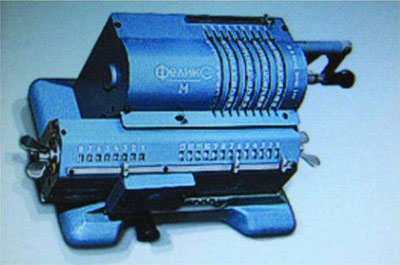
Fig. 8. Arithmometer Feliks-M
Arithmometer Feliks-M was usually produced in the “camp for re-educating of the young under-age criminals”. The apparatus was very similar to the contemporary German and Swedish designs. This apparatus was widely know as “Iron Feliks” to the memory of Feliks E. Dzeržinski, the first head of the ČK/OGPU/NKVD, which led to the establishing of the KGB.
By the decision of the USSR government No 1334 of 1954.07.02 it was planned to build a factory in Vilnius which will produce cash registers. Based on that decision during the 1954–1955 the Leningrad State Institute for Design of the Factories prepared necessary documentation for the construction of the factory. On 1955.01.12 the local Vilnius government allocated a field of land in the area of Verkių and Dzeržinskio streets. By the order Nr 26/k of 1956.05.05 to the position of the new factory director was assigned Bronius Borisa and in July of 1956 the construction works have started with first building – office of the factory – finished in autumn of 1956.
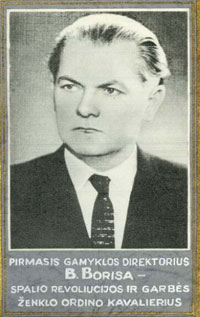
Fig. 9. Bronius Borisa
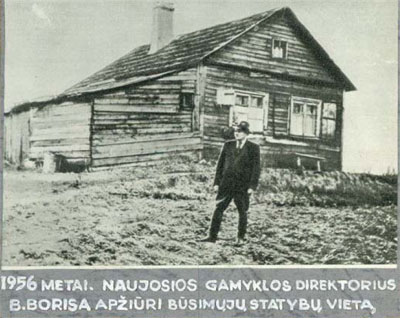
Fig. 10. B.Borisa at the future factory field (1956) the first director of “Sigma”
In 1957, with a few manufacturing workshops already built, the factory is preparing to the production of the multisectional cash registers and getting ingredients from Leningrad Cash Register Factory. By the decision No 56 of the LSSR National Economy Council (SovNarChoz) dated 1957.10.15 the Vilnius Cash Register Factory name and specialization was changed to became the Vilnius Factory of the of Calculating Machinery which significantly affected its future strategic developments.
And there is a historic moment – in February 1958 are assembled the first cash registers KA, later modified to KO – all together 404 units produced in 1958. From the June 1958 started preparation to the manufacturing of the perforators PS-80-1 and PR80-2 – in collaboration with the Moscow Factory of the of Calculating Machinery. By the end of 1958 Vilnius factory was employing 261 people.
In 1959 at the factory was established “Experimental Workshop” in which in May was produced electrical relay training/tuning workbench. Later on this workshop was producing perforators PJ-80-1, PS-80 and PR-80-2 – all together 13 machines per year. As you can see from the figures these apparatus were of the significant size and weight as compared with the modern devices.
3.2. Electronics Era
In 1960 there started manufacturing of the electronics-based devices such as EV-80-30. Later it was followed by the EV-80-30M device – during 1960 there were manufactured 10 devices. At the same time it was continued design and manufacturing of the 45 column perforators such as PR45 and PJ45.
The factory was developing and in October 1961 there started an export of perforators to the foreign countries. Perforators EV-80-3M were still manufactured – 53 units by the end of the year.
It is very little known fact that at the Vilnius Factory in 1962 was designed and manufactured analogue computer EASP-S – designed by the Head Constructor Laimutis Telksnys. There were produced 5 units. He also commented about the first Vilnius Factory manufactured computer: “The very first computer made in Lithuania in Vilnius Factory was a clone of the “IBM-604”. The original computer was most likely delivered via the 3rd countries, disassembled to the parts and was re-designed using soviet vacuum tubes”.
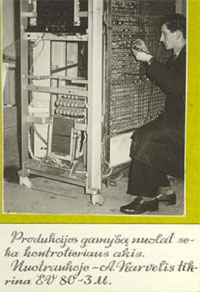
Fig. 13. EV-80-3M
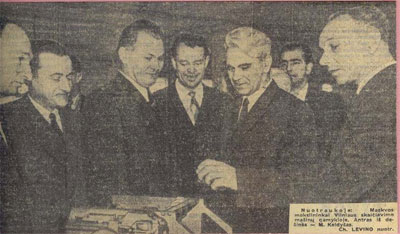
Fig. 14. The President of the USSR Academy of Sciences Testing (1961–1975) Mstislav Keldysh visiting Vilnius Computer Factory
IBM 604 had a control panel programmable Electronic Calculating Punch introduced in 1948.
In 1964 Vilnius Calculating Machinery Factory started to produce calculators “Vilnius” and “Rasa” which to the average person looked like very big typing machines which, however, was able to perform 6 arithmetic operations.
In 1963 was designed the second generation computer “Ruta” which was capable to perform 2,500 operations per second – the current processors can do over 100 Mln operations per second. After 5 years this computer was improved and appeared on the market as “Ruta-110” – for it’s manufacturing was needed 410 kilometers of electrical wires and 16,000 transistors and diods. There were manufactured 37 of such computing systems.
In 1966 this Factory become the “Sigma” Amalgamation Center.
3.3. Microprocessor Era
In 1973 “Ruta” computer was replaced by the 3rd generation “mini-computer” M5000 (40 sq.meters space and 2.4 tonnes of weight). These computers were faster and used for the mathematical and logical processing of the economic information (manufactured 1973–1979). It was followed by the modernized models M5010 (1975-1981) and M5100 (1978–1984).
Development of the mini-computer systems continued at “Sigma” with very successful models such as SM1600 (a clone of the DEC PDP-11/34, manufactured in 1982–1988) and super-mini SM1700 (a clone of the DEC VAX 11/730, manufactured in 1986–1990) – the latest in the USSR was commonly known as “LitVax”.
Additionally, in 1986 by the Kaunas Polytechnic Institute (now Kaunas University of Technology, KTU) together with the Kaunas Radio Measurement Technology Research Institute was designed the first personal computer in Lithuania – “Santaka”. It was a clone of the very popular in the West “Sinclair ZX Spectrum” computer which looked more like a keyboard attached to the TV set which was playing a role of computer monitor.
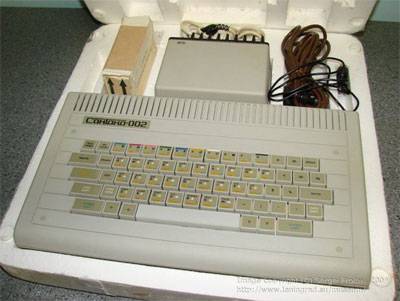
Fig. 15. The first Lithuanian personal computer “Santaka-002”
After that started the “screw-driver” manufacturing period of the personal computers in Lithuania – i.e. compatible with IBM by hardware and Microsoft by software.
References
-
Saint Petersburg State University. http://www.eng.spbu.ru/
-
Nicolaus Copernicus. http://en.wikipedia.org/wiki/Nicolaus_Copernicus
-
Philipp Melanchthon. http://en.wikipedia.org/wiki/Philipp_Melanchthon
-
Jesuit Order. http://www.history.com/this-day-in-history/jesuit-order-established
-
Steponas Batoras. http://lt.wikipedia.org/wiki/Steponas_Batoras
-
Christopher Clavius. http://en.wikipedia.org/wiki/Christopher_Clavius
-
Matematikos pradžia Lietuvoje. http://www.spauda.lt/science/math/math-lith.htm
-
Aleksey Mikhailovich Romanov. http://russiapedia.rt.com/prominent-russians/the-romanov-dynasty/aleksey-mikhailovich- romanov/
-
Sergey Lebedev. http://en.wikipedia.org/wiki/Sergey_Alexeyevich_Lebedev
Об авторе: London Metropolitan University, School of Computing, London, United Kingdom
Vilnius University, Institute of Mathematics and Informatics, Vilnius, Lithuania
a.pakstas@ieee.org
Материалы международной конференции Sorucom 2014 (13-17 октября 2014)
Помещена в музей с разрешения авторов
3 апреля 2016

